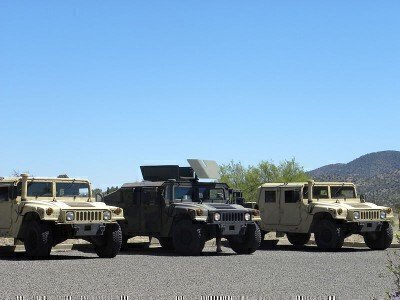It was on this day in 1916 that the National Guard officially got its name after Congress passed an important, if not overlooked, act to strengthen our military.
State militias have been around in some form since the American Revolution and they represent the oldest-known segment of today’s defense infrastructure, with their colonial origins dating back to 1607.
But on June 3, 1916, the National Defense Act made the use of the term “National Guard” mandatory for state militias, and the act expanded the President’s authority to mobilize the Guard during war or national emergencies here, for service or in different parts of the world, for the duration of the event that caused the mobilization. The act was an update of the Militia Act of 1903, which created the first early National Guard to make the state militia force easier to federalize and to train National Guard members professionally similar to the army. In addition, the 1908 Militia Act authorized the use of the guard overseas.
The 1916 Act was intended to guarantee the State militias’ status as the nation’s primary reserve force. (In 1933, the “National Guard of the United States”—a military reserve force composed of state National Guard members—was created and officially became a component of the Army.)
The Act also doubled the number of yearly drills and tripled the number of training days; established the Reserve Officer Training Corps; and paid for 375 new airplanes, creating the Army's first Air Division. President Woodrow Wilson championed the move as part of a preparedness effort related to World War I, which the United States government had avoided in 1916but was watching closely.
The Militia’s status as the nation's primary reserve first almost did not happen. Even after the 1908 act, the army continued plans to create a federal reserve service. In 1912, Secretary of War Henry L. Stimson asked Army Judge Advocate General Enoch H. Crowder to study the use of national guardsmen overseas. Crowder found that the Guard was bound in its operations by the specific language of the Constitution--it could not be used overseas. Attorney General George Wickersham agreed, producing an opinion that the federal government could not employ the National Guard for purposes beyond those enumerated in the Constitution’s militia clauses. Finally, the “Preparedness Movement,” beginning in 1913, led by former President Theodore Roosevelt and Army Chief of Staff Leonard Wood, advocated for universal military training and a million-man national army to compete with massive European armies.
The expanded Guard’s first role in 1916 in response to Mexican revolutionary Pancho Villa’s raid of Columbo, New Mexico as part of the ongoing Border War with Mexico going back to the beginning of the Mexican Revolution in 1910. During World War I, the National Guard accounted for around 15 percent of the eventual 2.8 million Americans who would wear the uniform during the war, but it made up 40% of the 43 divisions sent to France. The number of combat days for guardsmen exceeded regular army infantry. Guard divisions suffered a total of 103,721 killed and wounded--around 43 % of American casualties--a number nearly equal to the entire National Guard in 1903.
The role of state militias was frequently mentioned in the Constitution. Article 1, Section 8 defined the powers Congress had to call out the militia to “execute the laws of the union, suppress insurrections and repel invasions, to organize, arm and discipline the body when called out in service of the United States. Under Article II, Section II, the President is Commander-in-Chief of the “militia of the several states” when called into service.
And the Second Amendment made it clear the federal government had limited power over state militias, stating that, “A well-regulated militia, being necessary to the security of a free State, the right of the people to keep and bear arms shall not be infringed.”
Most of the troops in the Continental Army during the Revolutionary War were recruited from militias after states themselves conducted local drafts and local militias were used to fight with the regular army. Since then, the militias or National Guard contributed to every military campaign here and abroad.
Today, the National Guard has numerous roles domestically and internationally. The National Guard responds to various domestic situations, such as fighting fires and helping communities deal with natural disasters since at a state level the governors have the ability to call up Guard members. The President also has the right to mobilize the Guard, putting members on federal duty status, to suppress “any insurrection, domestic violence, unlawful combination, or conspiracy” or when it results in a denial of civil rights conferred to citizens by the 14th Amendment.








